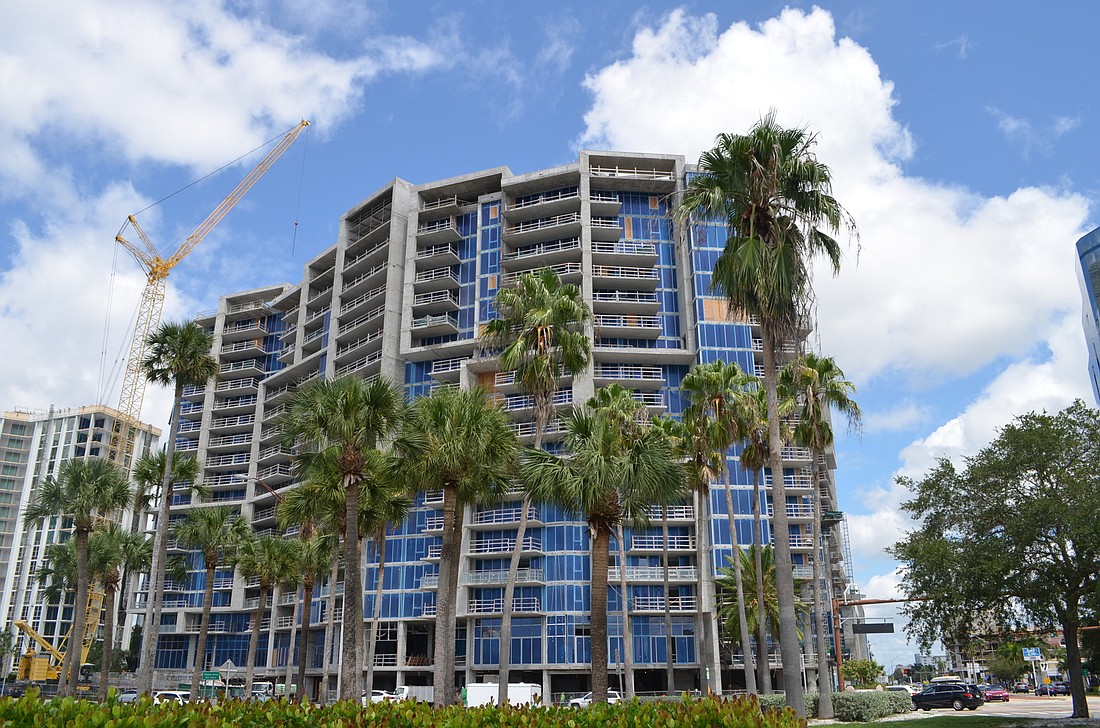- December 13, 2025
-
-
Loading

Loading

Headed into January, with the most intense part of season looming large, many of the biggest issues local officials are facing in 2017 are related to growth.
There’s traffic, of course. Each new year seems to coincide with residents eagerly pointing out that congestion is even worse than the previous year.
There’s also the impact of new development. In the downtown core, on Siesta Key and near the Interstate 75 corridor, people are raising concerns that Sarasota might be growing too much, too fast.
The city is revising its long-term transportation strategies. It’s also developing a new form-based zoning code that will govern future development, providing residents and builders with opportunities to offer their input before the regulations are adopted this year.
Multi-acre projects — from Sarasota Bayside on the former Quay property to Siesta Promenade at Stickney Point Road and U.S. 41 — will reshape the landscape of the region if they earn the necessary approvals.
Firmly emerged from the building lull of the early 2010s, there is a mounting call from residents to impose more stringent regulations on new development. In March, a City Commission election will give voters an opportunity to help guide the direction of growth.
With those issues and more pressed to the forefront in 2017, what actions will local leaders take when it comes to development and traffic?
In 2016, a group of neighborhood leaders banded together to form the activist group STOP, which is focused on overhauling city regulations pertaining to those topics.
The group says it’s not anti-growth. It just wants the city to adopt policies that better account for the impacts of new development and allow more public input on proposed projects.
Specifically, it wants to eliminate the administrative review process for large developments downtown. Rather than letting city staff determine if a project meets the necessary zoning requirements, STOP members say developers should go through the three-part public review process that includes hearings in front of the Planning Board and City Commission.
“When you have administrative approval, you’re alienating people from the process,” STOP steering committee member Jennifer Ahearn-Koch said. “When citizens are excluded from that, the frustration is intolerable.”
Karin Murphy, who wrote the city’s forthcoming form-based zoning code, said administrative approval is a useful tool. She wants to incorporate the desires of residents into the zoning regulations, so developers and residents have greater predictability when it comes time to plan a new project.
Concerns regarding development have gained traction in the county, as well. As the county reviews Benderson Development Co.’s 24-acre Siesta Promenade project and a proposal for a new hotel on Siesta Key, residents are asking the county to consider the cumulative effect the construction might have on the area around the island.
“The county is not looking at the whole thing comprehensively,” Siesta Key resident Lourdes Ramirez said at a December workshop.
So far, there hasn’t been a significant opposing force from the development community attempting to stem the tide of growth-related fear. That opposition doesn’t appear likely to mobilize in the immediate future, said Andy Dorr, a senior vice president at Githler Development Inc.
“There’s not much coordination going on,” Dorr said. “There probably should be more.”
“There’s not much coordination going on.” — Andy Dorr
Dorr has expressed some concern about the sentiment being stirred up by STOP, fearful tougher regulations might chill economic growth. He said the ire toward new development is misguided, because the issues many residents are concerned about have manifested while most new projects are still being built.
“It’s very complex,” Dorr said. “The situation our city faces is based on 50 years of development — not only in our city, but in our region.”
Individuals on both sides said the developer-versus-resident narrative is often inaccurate, highlighting areas of common interest. Chief among them: addressing traffic and transportation issues.
Mary Dougherty-Slapp, executive director of the Gulf Coast Builders Exchange, went so far as to say new development isn’t particularly troubling to most residents.
“They’re not really concerned about building,” Dougherty-Slapp said. “They’re concerned about traffic.”
In the first quarter of 2017, the city is expected to take a second try at rewriting the transportation chapter of its comprehensive plan. The commission rejected a version of that document in November, citing concerns regarding metrics measuring the impact of new development.
Commissioner Susan Chapman, one of three votes against the staff-recommended plan, said she wanted the city to take a new direction with its traffic policies. She said strategies have been focused on solutions that aren’t tailored to the behaviors of Sarasota residents.
“Let’s not play a game of ‘let’s pretend.’” — Susan Chapman
This year, she said she wants to see more substantial evidence rationalizing any actions taken to address transportation issues.
“Let’s not play a game of ‘let’s pretend,’” Chapman said. “Let’s see what alternatives people are likely to use under certain circumstances.”
As the city embraces multimodal transportation options, what will encourage residents to get out of their cars and use other methods of transit? She also wants to identify a better east-west road network in the city to ease congestion.
Between the city and county, developers and residents, traffic may be the most unifying issue in the region, which has led to optimism regarding the ability to make progress in 2017.
“I think where there is potential for collaboration, it is on transportation issues,” Chapman said. “I think everybody wants our transportation system to work.”
There is also frustration, however, at the lack of tangible results achieved during the past few years. Dorr, like others, expressed a desire for local officials to take substantive action as quickly as possible to address the issue.
“Everybody seems to be waiting for the magic bullet, for the $100 million new bridge to Longboat or whatever,” Dorr said. “What’s really going to solve this is doing the small things.”